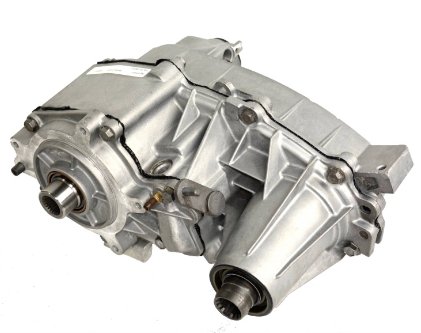Ford Rangers are renowned for their reliability and durability, but like any vehicle, they can experience issues with critical components. One such component is the transfer case, which plays a vital role in the 4-wheel drive system. This comprehensive guide will delve into common Ford Ranger transfer case problems, providing detailed information on diagnosis, solutions, and prevention strategies.
Understanding the Transfer Case
The transfer case is a crucial component in 4-wheel drive vehicles, including the Ford Ranger. It’s responsible for distributing power from the transmission to the front and rear axles, allowing the vehicle to switch between two-wheel drive and four-wheel drive modes. A properly functioning transfer case is essential for optimal performance, especially in off-road conditions.
Types of Transfer Cases in Ford Rangers
Ford Rangers typically use one of two types of transfer cases:
| Type | Description | Typical Models |
|---|---|---|
| Chain-driven | Uses a chain to transfer power between shafts | Most modern Rangers |
| Gear-driven | Uses gears to transfer power | Older Ranger models |
Common Ford Ranger Transfer Case Problems
1. Fluid Leaks
One of the most frequent issues with Ford Ranger transfer cases is fluid leaks. These leaks can occur due to worn seals, gaskets, or damage to the transfer case housing.
Symptoms:
- Puddles of reddish fluid under the vehicle
- Difficulty engaging or staying in 4-wheel drive
- Unusual noises during operation
Solution:
Inspect the transfer case for visible leaks. Replace worn seals or gaskets. In severe cases, the transfer case housing may need repair or replacement.
2. Unusual Noises
Strange noises coming from the transfer case area can indicate various problems, from minor issues to severe internal damage.
Symptoms:
- Grinding or growling sounds when engaging 4-wheel drive
- Continuous humming or whining noises during operation
Solution:
Check the fluid level and quality. If the fluid is adequate, the noise may indicate worn bearings, chains, or gears, which may require professional inspection and repair.
3. Difficulty Engaging or Disengaging 4-Wheel Drive
This problem can be frustrating and potentially dangerous if you rely on 4-wheel drive capability.
Symptoms:
- 4-wheel drive won’t engage or disengage
- Delayed engagement or disengagement
- “Service 4WD” light on the dashboard
Solution:
First, ensure you’re following the correct procedure for engaging 4-wheel drive. If the problem persists, it could be due to a faulty shift motor, control module, or internal transfer case components. Professional diagnosis is recommended.
4. Chain Wear or Breakage
In chain-driven transfer cases, the chain can wear out over time or break, especially if maintenance has been neglected.
Symptoms:
- Loud clanking or banging noises
- Complete loss of power to one or both axles
- Metal debris in the transfer case fluid
Solution:
Chain replacement is necessary. This is a complex job that typically requires removing the transfer case and should be performed by a qualified mechanic.
5. Bearing Failure
Bearings within the transfer case can wear out, leading to increased friction and potential damage to other components.
Symptoms:
- Whining or grinding noises that change with vehicle speed
- Excessive heat from the transfer case area
- Difficulty shifting between drive modes
Solution:
Bearing replacement is required. Like chain replacement, this is a job best left to professionals due to the complexity of disassembling the transfer case.
Preventing Transfer Case Problems
Proper maintenance is key to preventing many transfer case issues. Here are some essential tips:
- Regular Fluid Checks: Check the transfer case fluid level and condition regularly, typically every 30,000 miles or as recommended in your owner’s manual.
- Timely Fluid Changes: Change the transfer case fluid according to the manufacturer’s schedule or more frequently if you often drive in harsh conditions.
- Avoid Shifting While Moving: Always come to a complete stop before shifting into or out of 4-wheel drive to prevent unnecessary stress on the transfer case.
- Use 4-Wheel Drive Properly: Avoid using 4-wheel drive on dry pavement, as this can cause binding and excessive wear.
- Address Issues Promptly: If you notice any unusual noises, vibrations, or performance issues, have them checked out immediately to prevent minor problems from becoming major repairs.
When to Seek Professional Help
While some transfer case maintenance tasks can be performed by experienced DIY enthusiasts, many problems require professional attention. Consider seeking expert help if:
- You’re unsure about the source of a problem
- The issue involves internal transfer case components
- You lack the specialized tools or expertise for complex repairs
- Your vehicle is still under warranty (DIY repairs may void the warranty)
Remember, a well-maintained transfer case can significantly extend the life and performance of your Ford Ranger’s 4-wheel drive system.
Conclusion
Ford Ranger transfer case problems, while not uncommon, are often preventable with proper maintenance and care. By understanding the symptoms of potential issues and taking prompt action, you can keep your Ranger’s 4-wheel drive system in top condition for years to come. Regular maintenance, careful operation, and timely repairs are key to ensuring your Ford Ranger remains the reliable workhorse it’s designed to be.
FAQs
What’s the average lifespan of a Ford Ranger transfer case?
With proper maintenance, a Ford Ranger transfer case can last the lifetime of the vehicle, often 150,000 miles or more.
How often should I change my Ford Ranger’s transfer case fluid?
Ford recommends changing the transfer case fluid every 30,000 to 60,000 miles, depending on usage conditions.
Can I drive with a leaking transfer case?
It’s not recommended. Driving with a leaking transfer case can lead to severe damage and potentially dangerous driving conditions.
What does it cost to replace a Ford Ranger transfer case?
Replacement costs can vary widely, typically ranging from $1,500 to $3,500, including parts and labor.
Is it normal for my transfer case to make noise when engaging 4-wheel drive?
A slight noise is normal, but loud grinding or continuous noises indicate a problem that needs attention.
